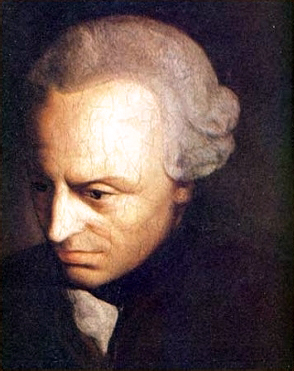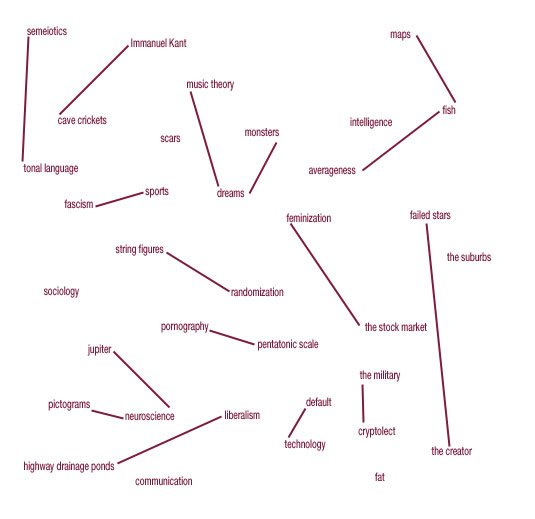
What follows is a response I gave to the introduction to a text by pierre bourdieu. here it is on the web if you want to have a look. I'm pleased with what I wrote, because I think I've set the pattern for merging my natural, conversational writing style into a more academic one. See what you think -- my response is only 550 words or so:
| Response to the Introduction to Distinction: A Social Critique of the Judgement of Taste by Pierre Bourdieu Pierre Bourdieu argues that in order to consume high-brow cultural products, one needs the proper “history reproduced by education,” as he puts it – in other words, one’s own social location, and its effect on one’s cognitive and emotional processes, will function as an ultimate determinant of what is consumed, and appreciated. By writing “…the capacity to see (voir) is a function of the knowledge (savoir)…” , Bourdieu demonstrates that our tastes grow out of our world-view. He brings a teleological discussion into his theory of taste: the lower classes develop their aesthetics around a sense of purpose, and can’t help but be “interested”, in a Kantian sense (the implication may be that in order for art to be high art, it needs to be without purpose, which is as good as any definition of art). The argument is essentially elaborated upon with references to the “pure aesthetic,” and how in order for someone to consume this superior level of product, they must have a degree of distance from a sort of gritty reality – something that’s best done with membership in a caste on a higher rung: the more aristocratic members of society will be the ones hearing classical concerts and visiting museums. As I read I looked for clues on whether or not Bourdieu approved of this phenomenon – that aesthetic preferences are determined by social class – or not. He reveals his opinion in the last few paragraphs with some bombast that I’m certain amounts to sarcasm (especially considering M. Bourdieu’s own social location: a French, Marxist sociologist and cultural theorist): “The culture which results from this magical division [into high and low products for high and low consumers] is sacred. Cultural consecration does indeed confer on the objects, persons, and situations it touches, a sort of ontological promotion akin to transubstantiation.” Ouch. The idea that there is high art, that there are mass-cultural products crudely masquerading as “art,” and that the determinant of their respective consumers is social class, is a difficult pill to swallow, especially for a North American who is accustom to the “classless society” being mythologized and idolized, however naively. When it’s pointed out that “all (most? ) people in group X do thing Y”, this sets off alarms warning that this might not be something to bring up at the dinner table. Bourdieu delivers his grim observations, but then colors them with a tongue-in-cheek sarcasm to frame his disapproval, so that we know he’s the good guy. Whether or not Bourdieu was being sarcastic when he said that class and aesthetic divisions are a good thing is ultimately immaterial – who cares what he thinks, or what his politics are? His scientific observations on class, taste, and their parent-child relationship, stand firm. Finally, as I simplify all of this into “Oh, in case you didn’t know, taste is determined by class,” it appears tautological or at least self-evident: without aesthetic preferences, the only thing defining a social class would be how much money was in a given bank account, which (as far as I know) is largely or perhaps even strictly a (North) American fantasy. |
Kant - critique of judgement - notes
It would take me a semester to thoroughly understand it. Each sentence is complex enough that I can write a paper on it. I feel like when I just read it through, I'm not doing it justice. I think they teach classes on Kant's critiques.
It's a multi-step process for arriving at the answer to "is this thing beautiful?". Can this be done? I don't really think so. Seems to be about kant's own minute mental processes, and I can't guarantee that these are universal. Why is it important to judge something as beautiful? It seems we're beyond that, in art.
Here's a summary of my analysis of the first sentence:
Taste is a matter of subjectivity
cannot be judged with rationality, but rather the emotions
specifically, using phenomenological means:
here is X
create a mental object of X
do not apply mental object of X to X and use X's properties to color your mental object
but rather take the mental object of X, independent of X (to the degree that this is possible), and "refer" it to yourself. I believe this just means "consider it". Or, more specifically, in this case, test it with your emotional response.
Summary of the process:
SS 1. The judgement of taste is aesthetic.
SS 2. The delight which determines the judgement of taste is independent of all interest.
SS 3. Delight in the agreeable is coupled with interest.
SS 4. Delight in the good is coupled with interest.
SS 5. Comparison of the three specifically different kinds of delight.
SS 6. The beautiful is that which, apart from concepts, is represented as the Object of a universal delight.
SS 7. Comparison of the beautiful with the agreeable and the good by means of the above characteristic.
SS 8. In a judgement of taste the universality of delight is only represented as subjective.
I like Kant's ideas of beauty (exemplified in the human face) being average. This parallels some contemporary scientific ideas about the perception of beauty, and relates to some pre-thesis ideas I had about averageness.
I Thought today would be a good day to start a new page, partly because today's entry is going to be huge. But ultimatly, it's somewhat arbitrary; at today's connection speeds (not to mention the fact that html loads top-down), I could put the whole blog on a single page without great penalty, and avoid having a blog index. But then where would my pretty and painstakingly-Photoshopped Green Indian go? Also, I save SDF some bandwidth this way. Yay SDF!
Well, today (or "this week", before next Monday, at least) I'm going to read the rest of that first Kant essay (I did the first sentence 3 days ago -- time really flies here). The best way to understand difficult and dense readings is to blog-as-I-read, so that's how I'm going to do it, at least for now. That also fits in with my original plans to make this a professional blog and an MFA scratchpad, so woop-de-doo. I've also got some ideas for projects -- possible thesis directions -- that I'll post here as well. I think first the thesis directions, because I've got those all written out and I want to procrastinate a little bit on tackling Kant.
But I will post a picture of Immaneul Kant -- a painting, from the late 1700s or early 1800s. As far as I can find, there is no attributable artist. Note how he's been portrayed from above to show off his massive cranium and overpowering intellect.

Oh man, the inclusion of that image makes my blog look smart. Now that you've been sufficiently cowed into intellectual submission, I'll post a list of ideas I've been working on over the summer. Everytime I had a small inspiration, I'd jot it down. I took out (most of) the stupid ones, and this is what remained:
I emailed this to my first semester advisor, and I'm afraid she might have been a bit overwhelmed. So, I pared it down some more, with the fact that I'll be doing either interactive CDs or DVDs in mind:
CD 1 - "Anatomy of a Monster Fish"
CD 2 - "Jupiter is a Failed Star"
Finally, here's an image that I made yesterday. I had this idea that I could make a map of text ideas, joined up to see possible relationships and combinations. I just made the one -- I guess ideally I'd make several (20 or so), and see different possibilities. There, I made a few more.




Okay, now for the Kant.